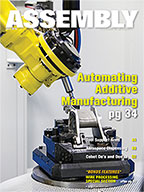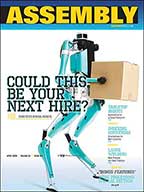During a recent road trip, I encountered two bridges under repair. Both bridges had only one lane open, necessitating a way to alternate the flow of traffic. At the first bridge, that task was handled by two flagmen, one on each end. At the second, traffic was controlled by a pair of portable, automatic gates.
I couldn’t help but wonder which approach was better.
The first bridge would need at least six flagmen per day, assuming they work 8-hour shifts. What do you pay them? It’s not a skilled job, but it is difficult. When I crossed the bridge, conditions were miserable. It was hot and humid. The men were wearing hard hats and jumpsuits. Their faces were covered by bandanas. The workers were exposed to dust, exhaust, UV rays, and noise from traffic, tractors and construction tools. It’s a boring job, yet they must pay attention to what they’re doing. And, there’s an element of risk. They could certainly be hit by an inattentive driver or a wayward steel beam. Still, you can’t pay a flagman more than, say, a crane operator or welder.
Using automated traffic control gates would require an upfront capital investment. (The devices cost $15,000 to $30,000 per pair.) Presumably, that cost could be amortized over multiple construction projects, but even so, the initial outlay would be less than the annual salary of one flagman, much less six.
So which approach is better? Should we despair for the six people “displaced” by the automated gates? I think not. Who wakes up in the morning with a burning desire to breathe diesel fumes for eight hours and bake in the hot sun? Is the construction company inundated with flagman applicants? What’s to prevent those six displaced workers from becoming crane operators or welders?
There’s been a lot of talk lately about automation and manufacturing jobs. Much of it lacks nuance, if not understanding. The truth is, there are many ways to justify automation—better quality, higher precision, greater throughput and improved safety, to name a few. It’s not simply about lowering labor costs or “eliminating jobs.”
I once visited an assembly line that makes small, brushed DC motors. For optimum performance, the rotors are balanced, just like the wheels of a car. In the past, this was done manually. An instrument spun the rotors and indicated where they were out of balance. But, the process of adding or removing small amounts of weight from each rotor was done manually. The factory employed a dozen workers just for that task.
Then, the company automated the process. The fully automated line produces rotors faster, more repeatably, and at a higher level of quality than the manual operation. One person now tends the line, and the remaining 11 work elsewhere in the factory. Automating enabled the company to keep motor production—and, indeed, the entire factory—in the United States. That’s a good thing. Don’t fear automation; use it strategically to improve your operation.




